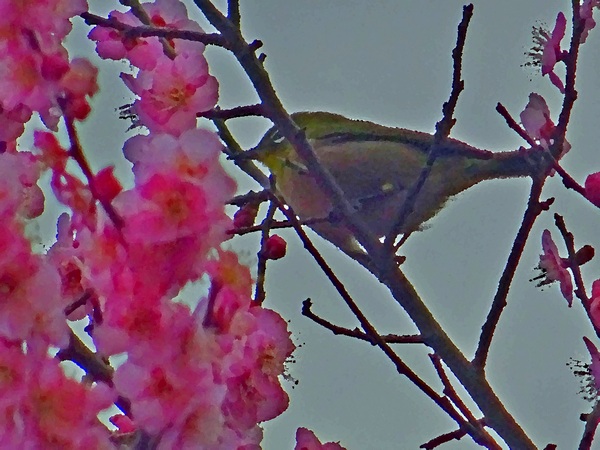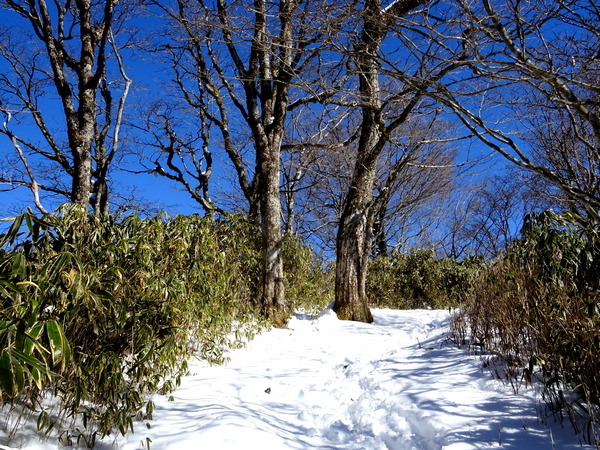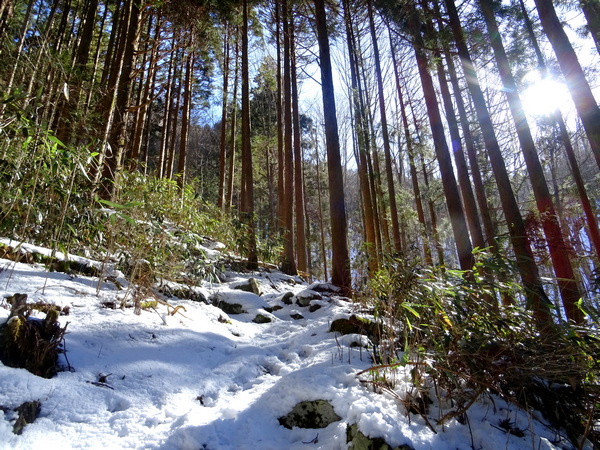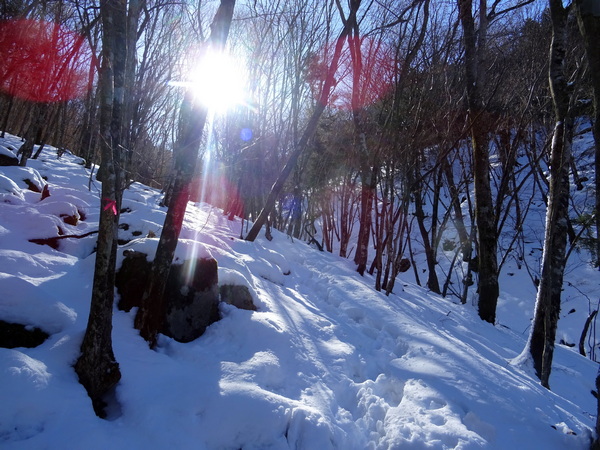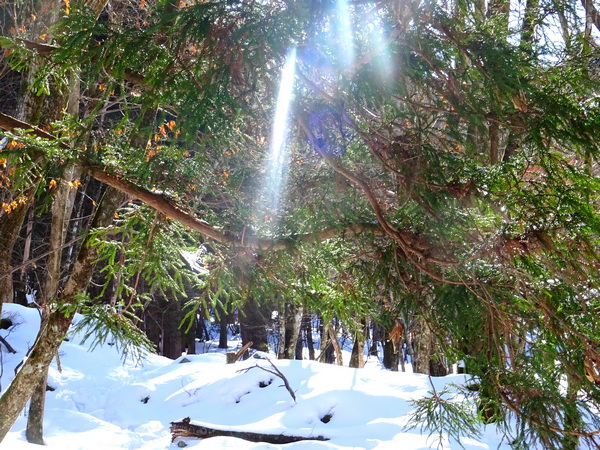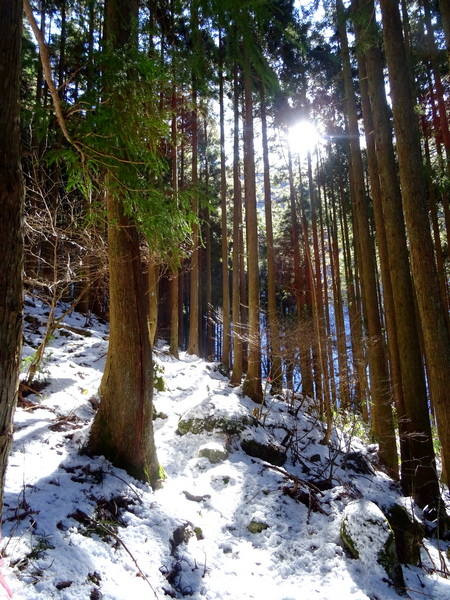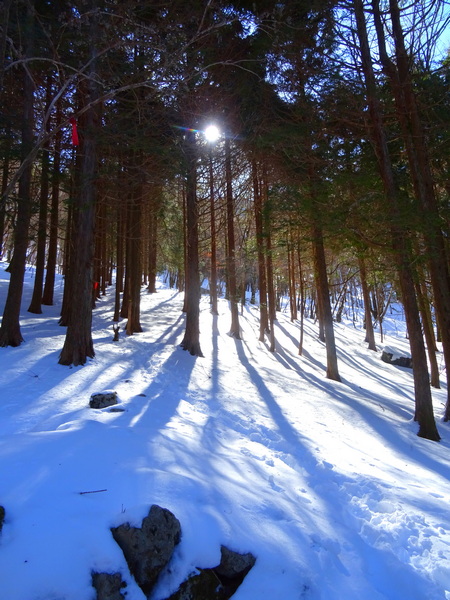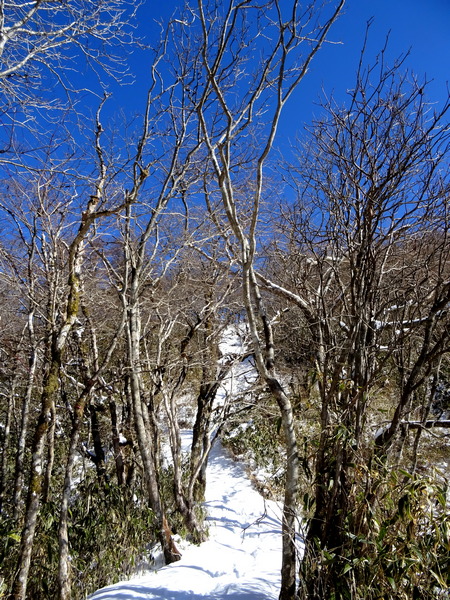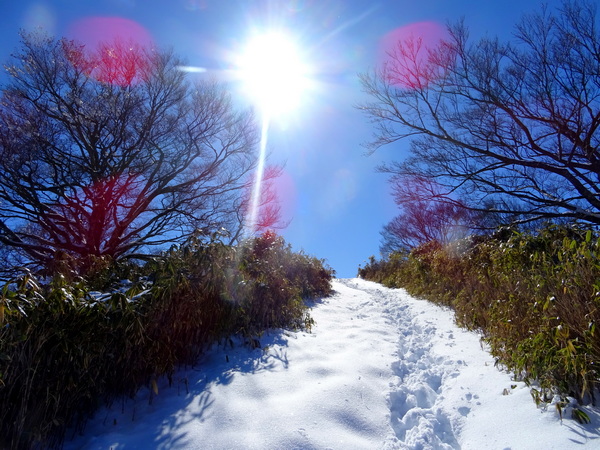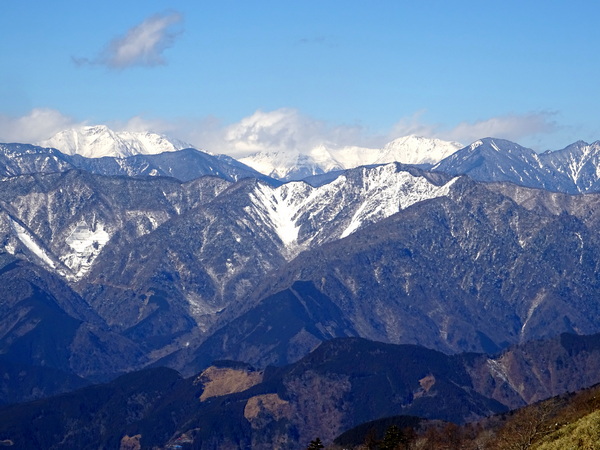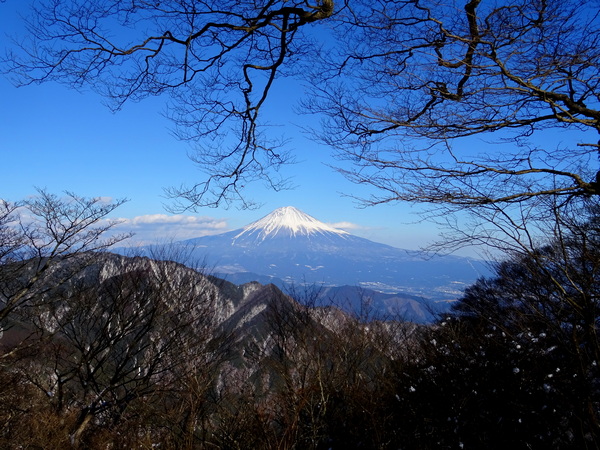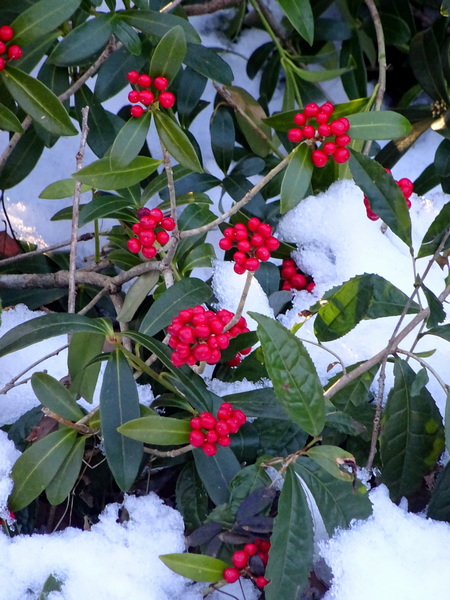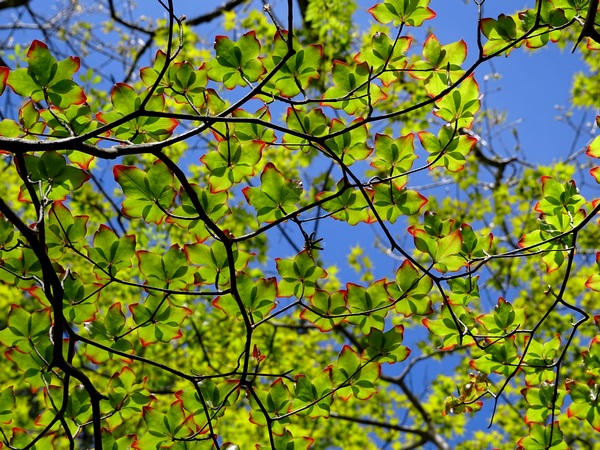
The first weekend in May! We decided to go up to Umegashima, to the Hakkorei trail, to see how the yashio were doing.
They were doing great!

I think we knew, 15 kilometers away, when we passed the Umegashima plum orchard, that the yashio were going to be lovely.
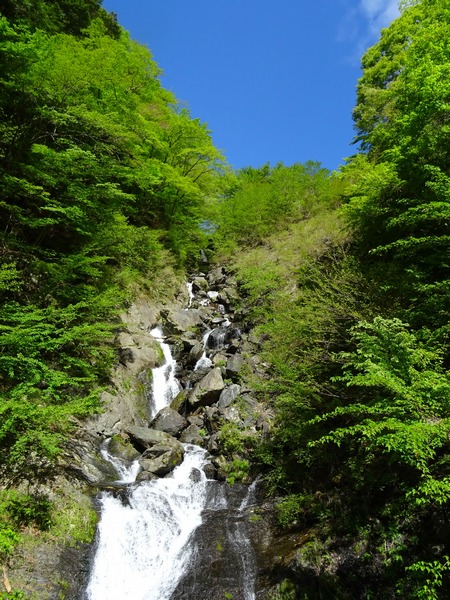
When we passed the waterfall, still three or four kilometers away from the trail, and saw the shimmering green and blue there too, we knew—down to the bone—how lovely the yashio would be.
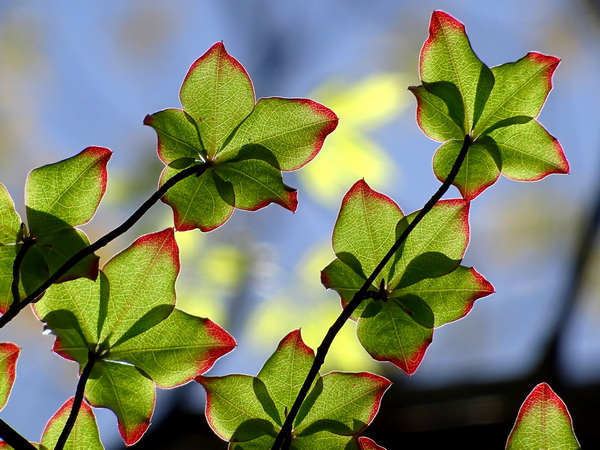
And then there they were—so lovely.
It was hard to believe, but Vam-I-Am was there, too. He seemed befuddled by how much joy the yashio were giving us. His brow was wrinkled and his head was tilted to the side—and we realized he was wondering if there could be any situation in which the yashio did not give us joy. (Of course, we we were wondering if he didn’t have something else better to do.)
And Vam-I-Am said to us, “You like them when the sun is bright, but would you like them in the night?”
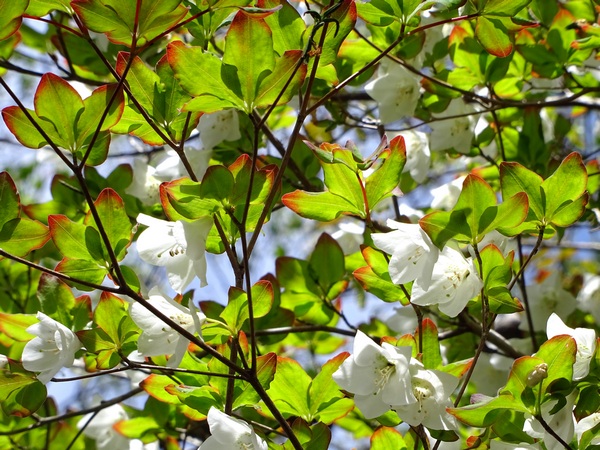 We nodded.
We nodded.
“Of course, we like them when it’s bright, but they’re also nice in dreams at night.”
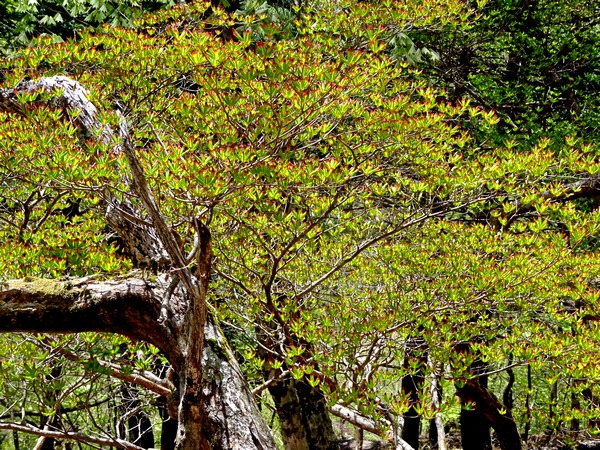
“But,” Vam-I-am said, “Would you like them while you lunch? Would you like them in a bunch?”
“Why, yes,” we replied. “We especially like to see them in a bunch–especially while we munch our lunch.”
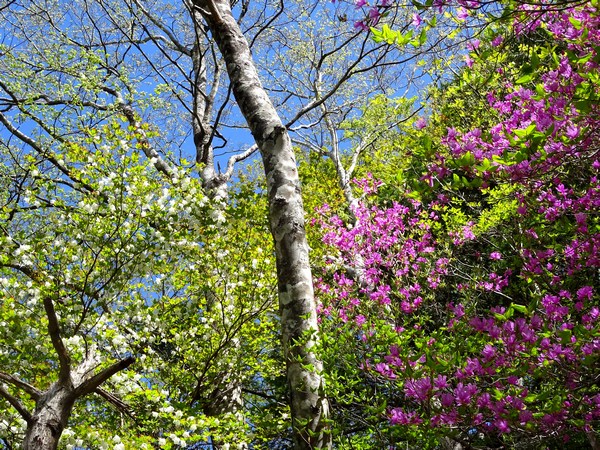
“Would you like them with purple flowers near? Then would they seem to you so dear?”
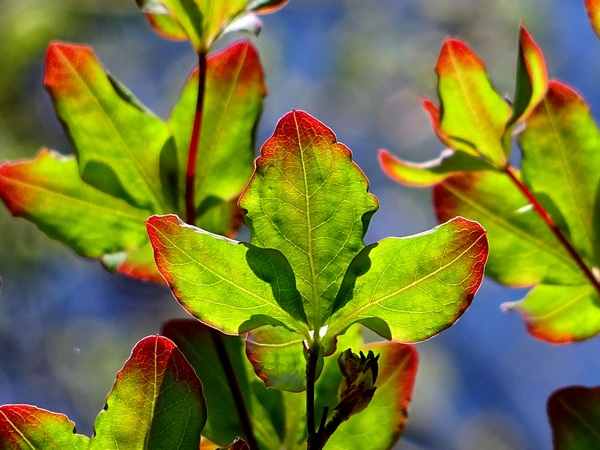
Again we nodded.
“Yes, we’d like like them still with purple near—even with the grey they’re dear.”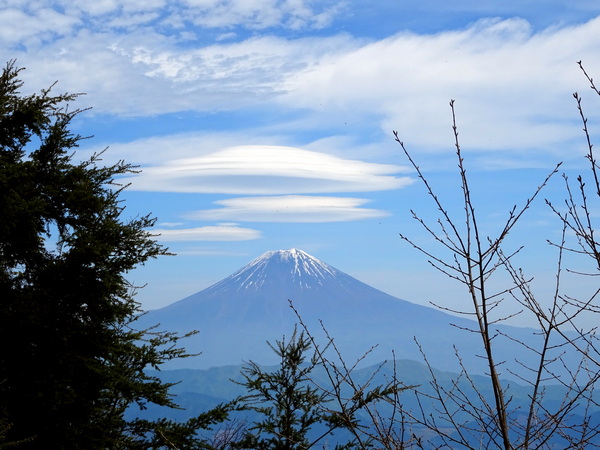
“If Fuji couldn’t find his hat? Could you like them on a day like that?”
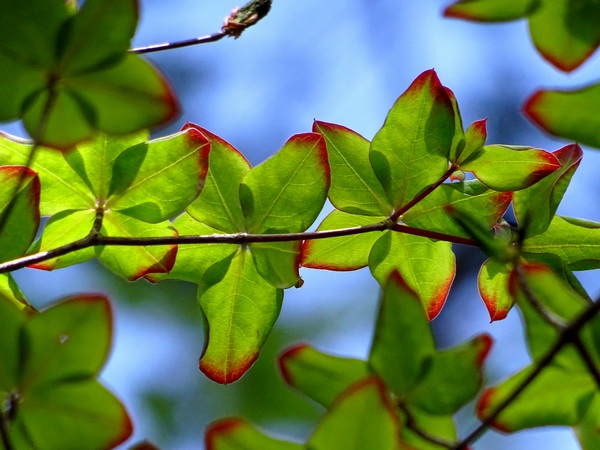
“Lost his hat? What do you mean by that? She’s merely thrilled to see aglow the bright and lovely yashio!”
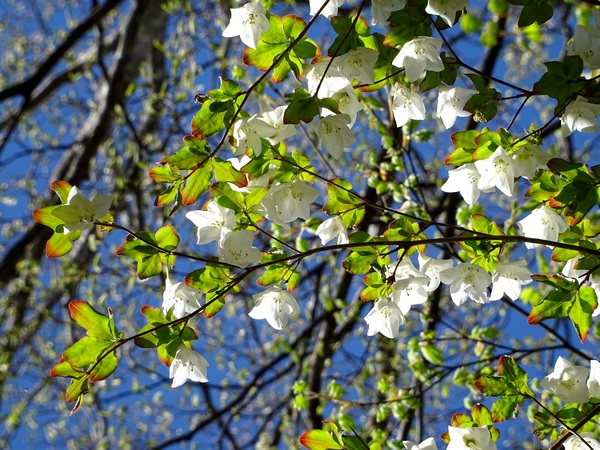
“What if you stubbed your toe, would you like them then? Would you like them if there were only ten?”
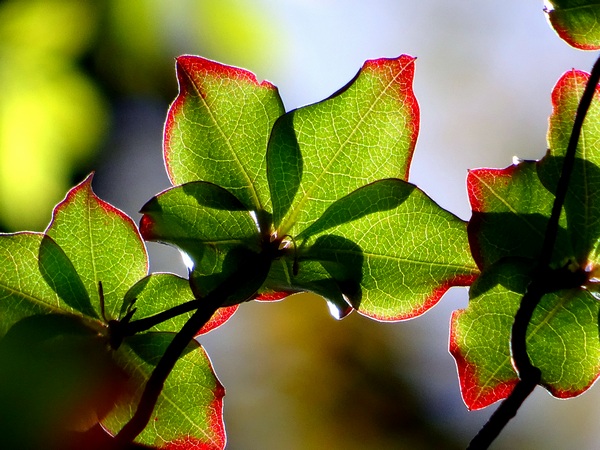
“Especially if we stubbed our toe–we’re never going to answer no. Ten or five or two or one! Why one would give us so much fun!”
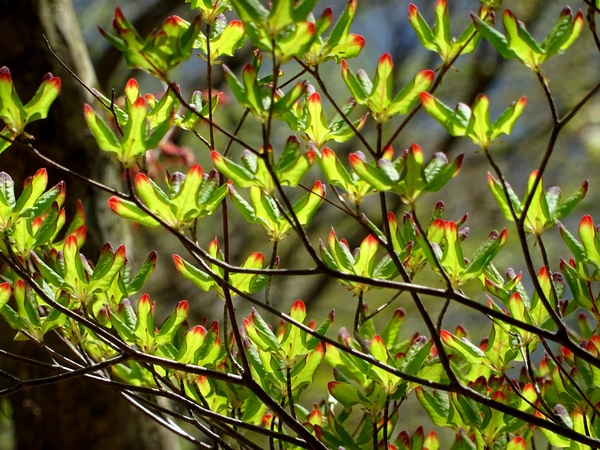
“What if they burned your hand? Upon your soul made some demand?”
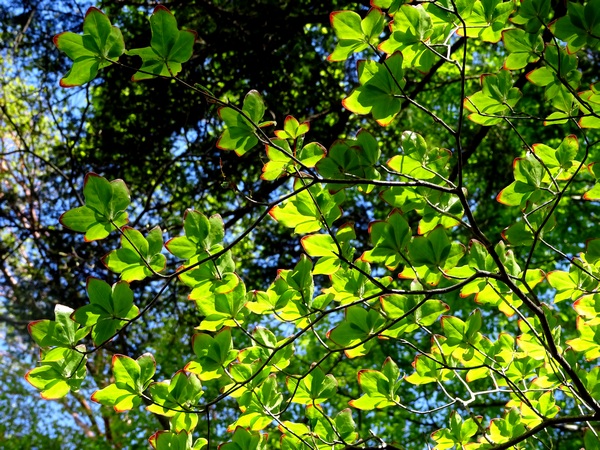
“Oh, Vam-I-am, what’s wrong with you? Can’t you see when things are true?”
That exasperated him, let me tell you. He threw his hands up in despair, then pressed them to his sides, flopped down on his belly, and slithered back down the mountain.
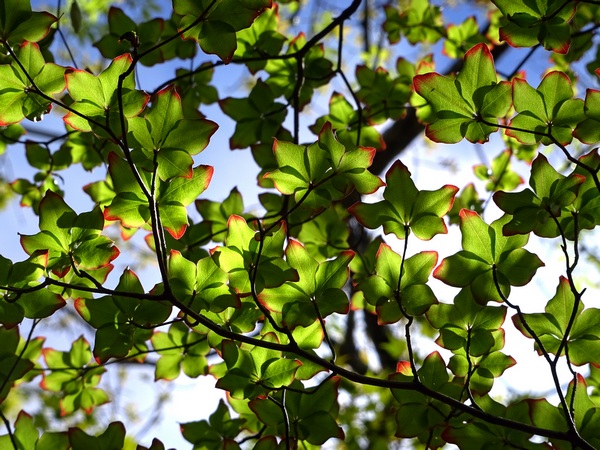
We Hearty Hikers shrugged our shoulder and turned our attention back to the yashio.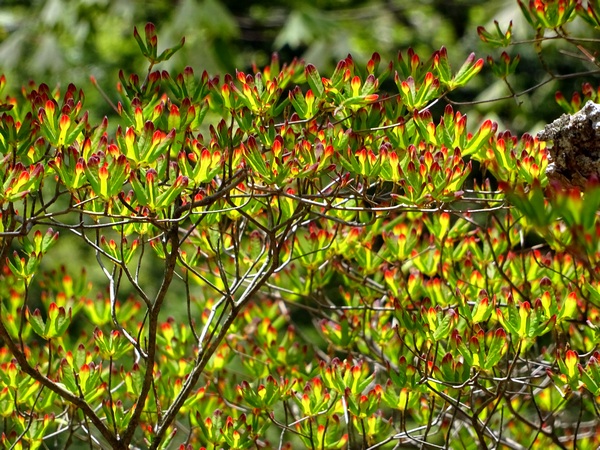
Then we heard another voice. The purple mountain azaleas were talking.
“Yashio, yashio!” they moaned. “What about us?”
“You’re lovely, too,” we replied.
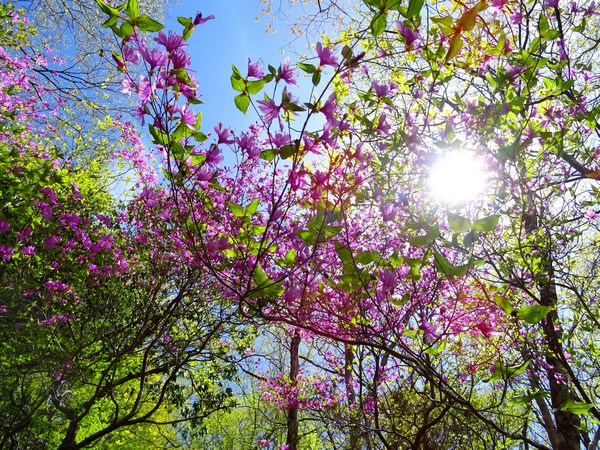
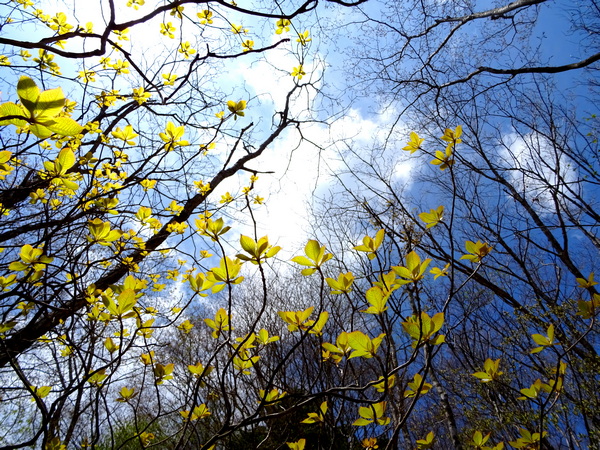
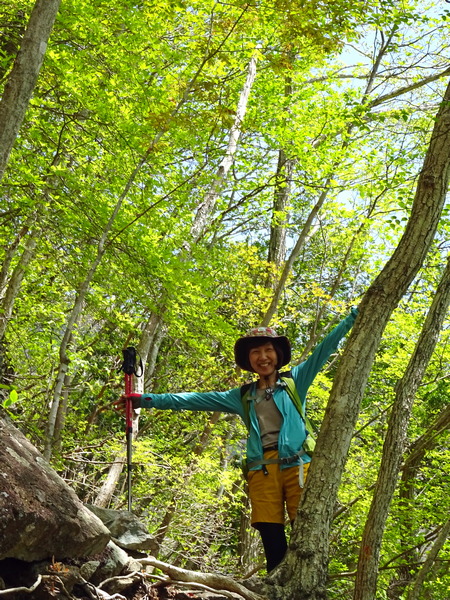 In May, on a clear day, you’ll feel a lot sugar being manufactured in the canopy above. Something from the manufacturing process seems to spill over into the hiker, as can be seen in the picture above. What’s actually at work physiologically, well, feel free to consult your own scientific authority.
In May, on a clear day, you’ll feel a lot sugar being manufactured in the canopy above. Something from the manufacturing process seems to spill over into the hiker, as can be seen in the picture above. What’s actually at work physiologically, well, feel free to consult your own scientific authority.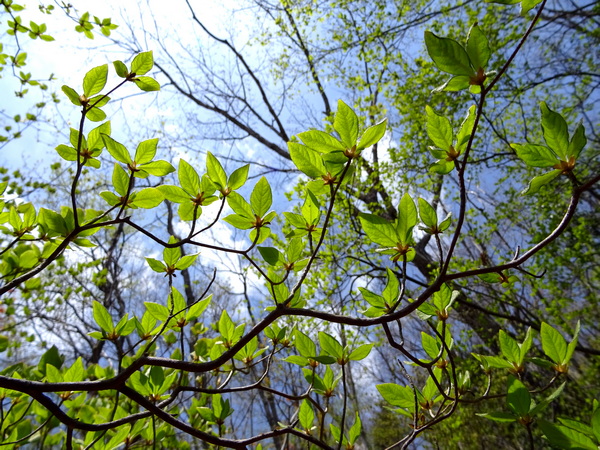
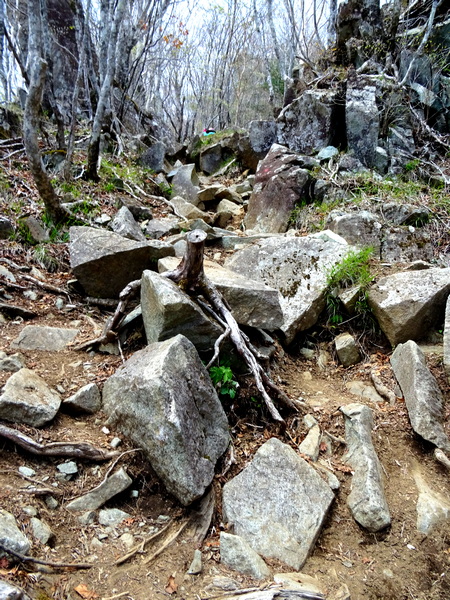 . . . you’re going up at a 45 degree angle for the vast majority of the climb. Eat your Wheaties before you leave home. It took us a little under three hours to reach the top.
. . . you’re going up at a 45 degree angle for the vast majority of the climb. Eat your Wheaties before you leave home. It took us a little under three hours to reach the top.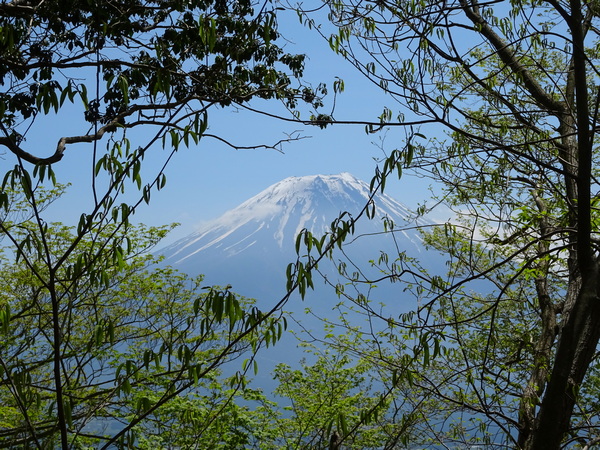 Along the way, with the leaves not yet fully out, you can sneak views of Fuji here and there, but . . .
Along the way, with the leaves not yet fully out, you can sneak views of Fuji here and there, but . . .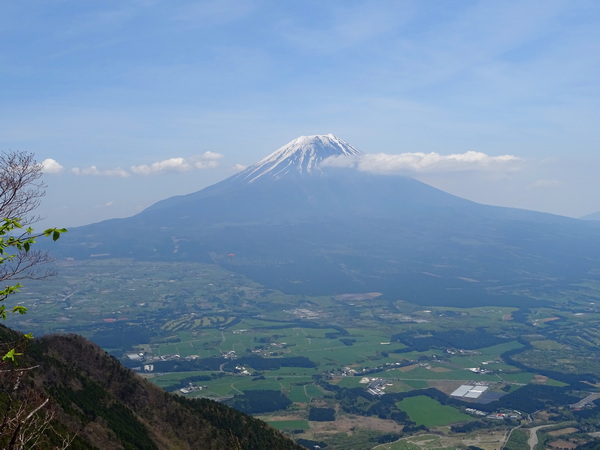

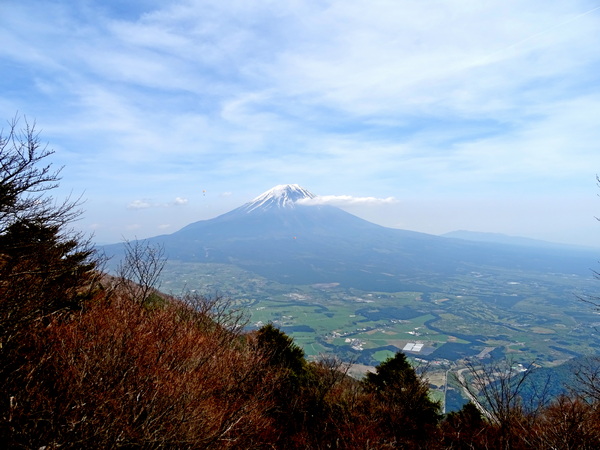
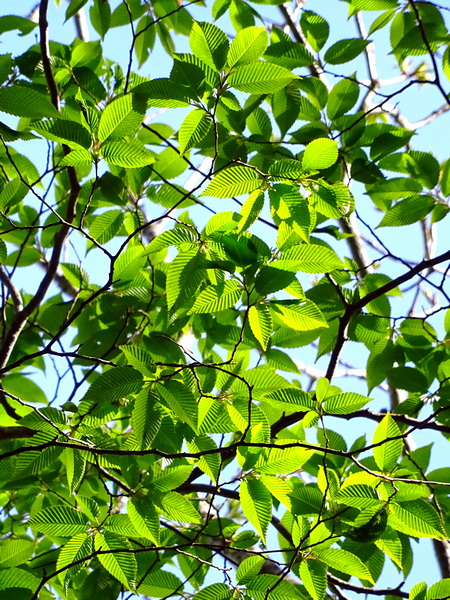 You can go back the way you came, or you can walk farther back along the ridge, past where you came up, and descend via the Jizo Pass.
You can go back the way you came, or you can walk farther back along the ridge, past where you came up, and descend via the Jizo Pass.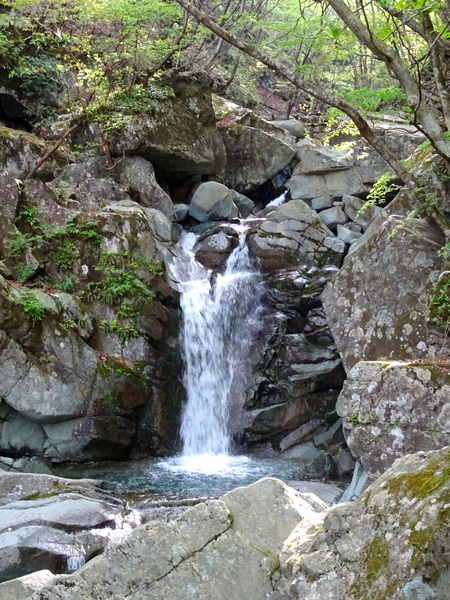 It’s a slightly longer route, but the last hour or so will be along the Kanayama River with all its waterfalls and green pools. Recommended.
It’s a slightly longer route, but the last hour or so will be along the Kanayama River with all its waterfalls and green pools. Recommended.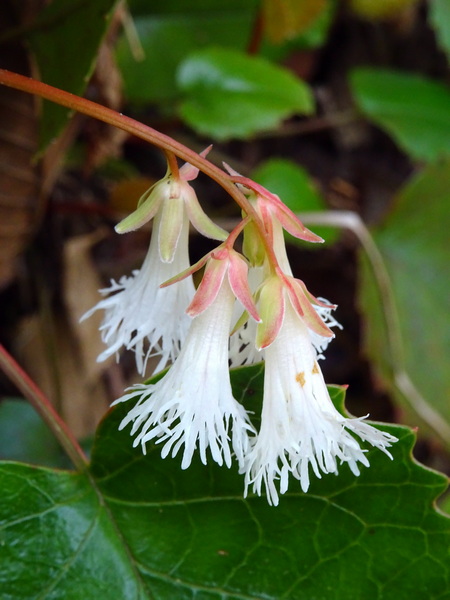 You might discover the iwakagami “rock mirror” flowers along your way.
You might discover the iwakagami “rock mirror” flowers along your way.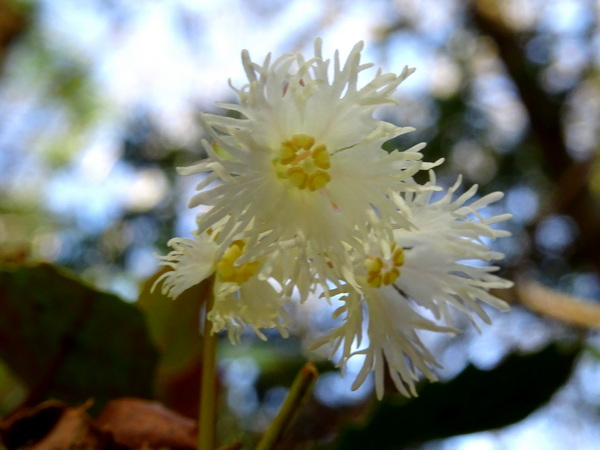 You can imagine what the ants make of them.
You can imagine what the ants make of them.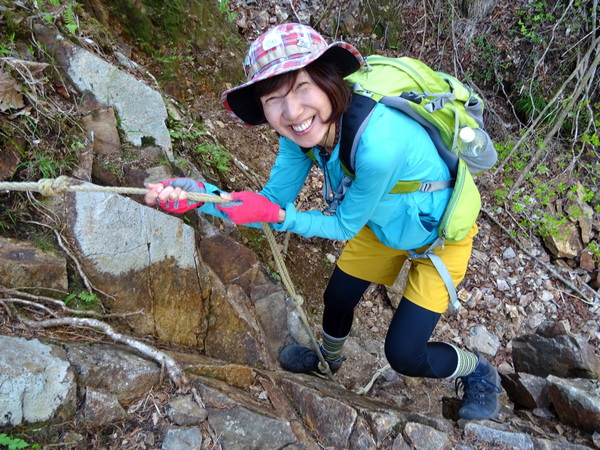 You can even experience some dangerous and agonizing rock-climbing (note expression on Hearty Hiker’s face).
You can even experience some dangerous and agonizing rock-climbing (note expression on Hearty Hiker’s face).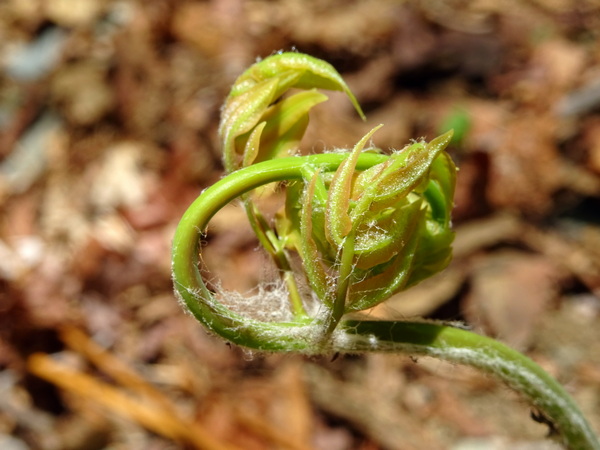
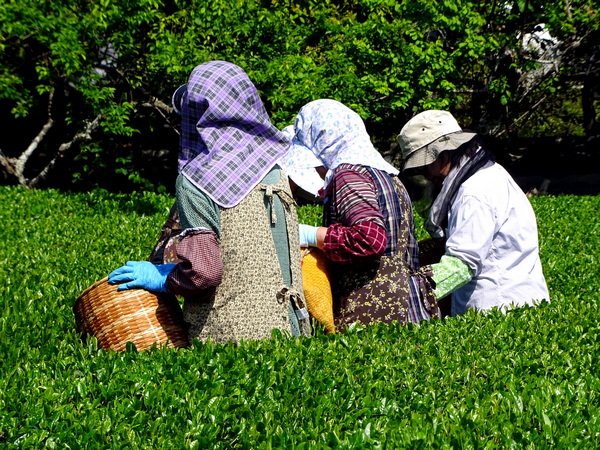
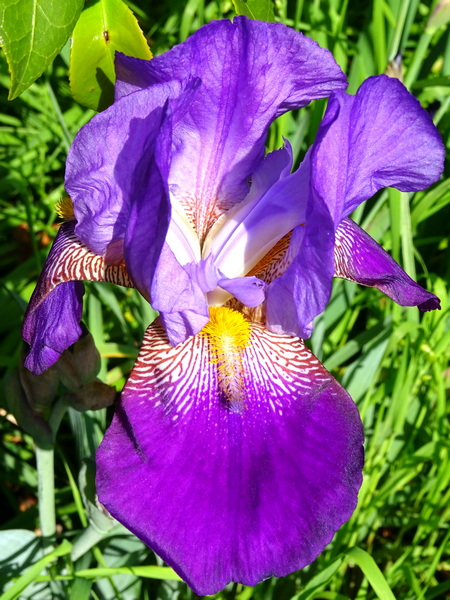
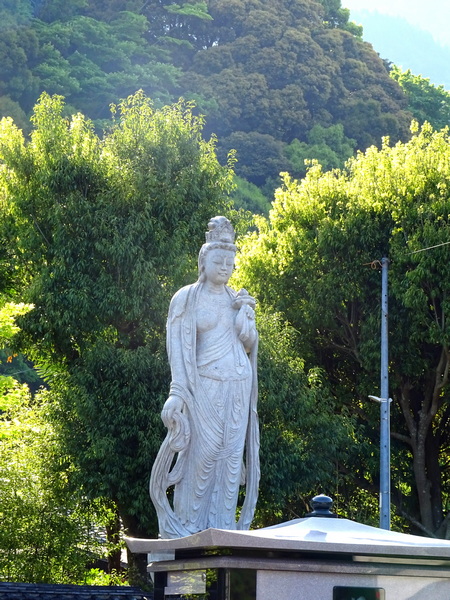
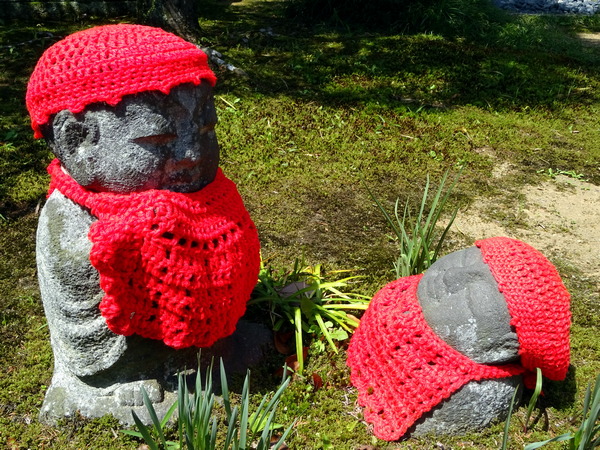 . . . with all the little folks that make me feel so happy.
. . . with all the little folks that make me feel so happy.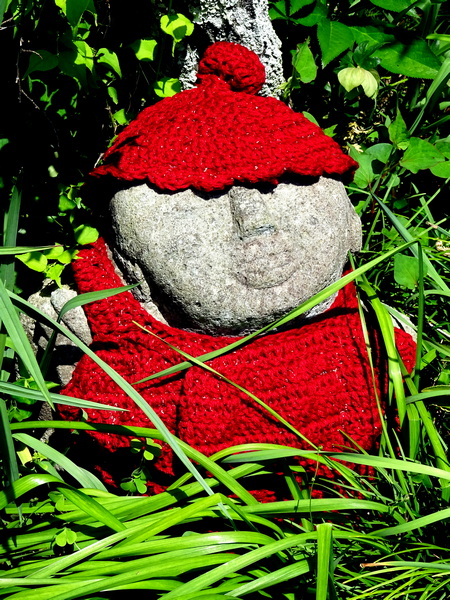 All the little folks that want to be outside in nature.
All the little folks that want to be outside in nature.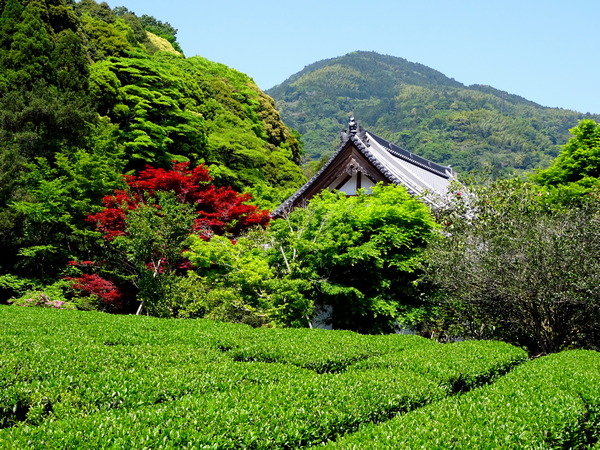
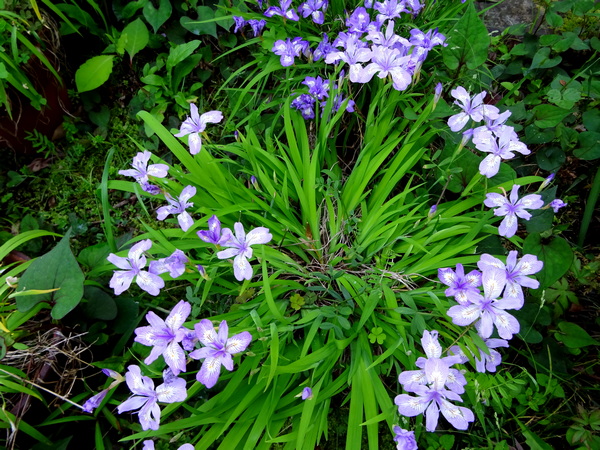
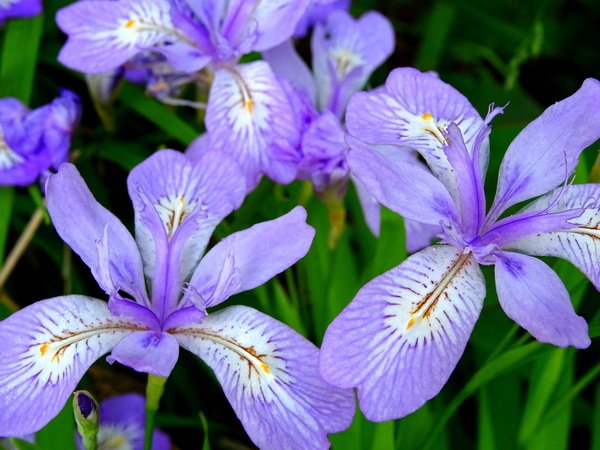
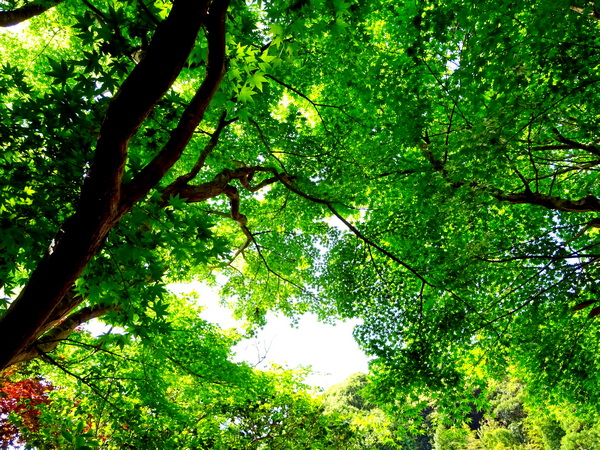 The maples.
The maples.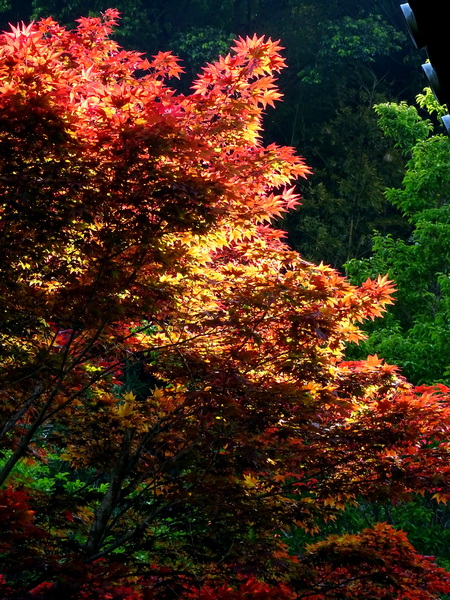 The sunshine in the maples.
The sunshine in the maples. The stars in the maples.
The stars in the maples.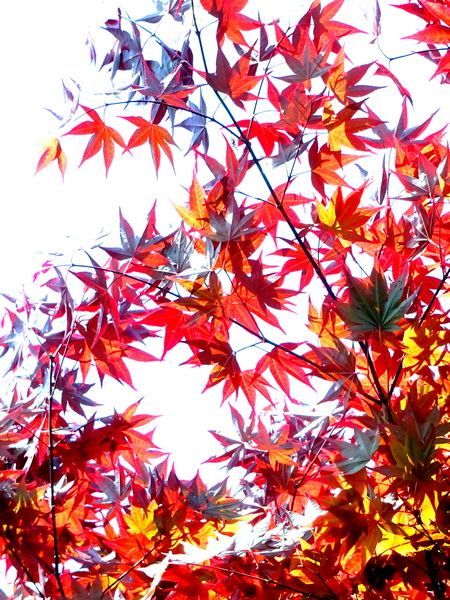
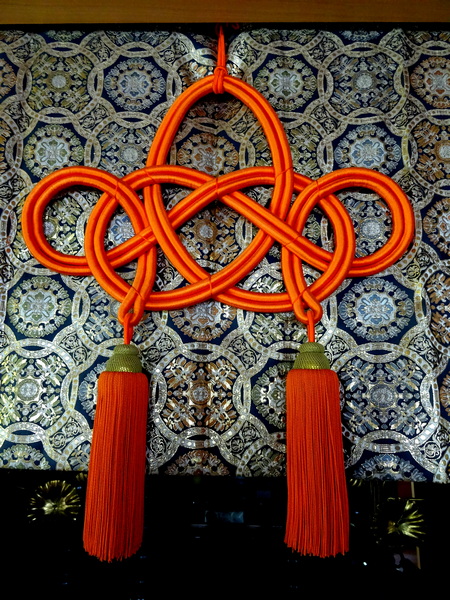
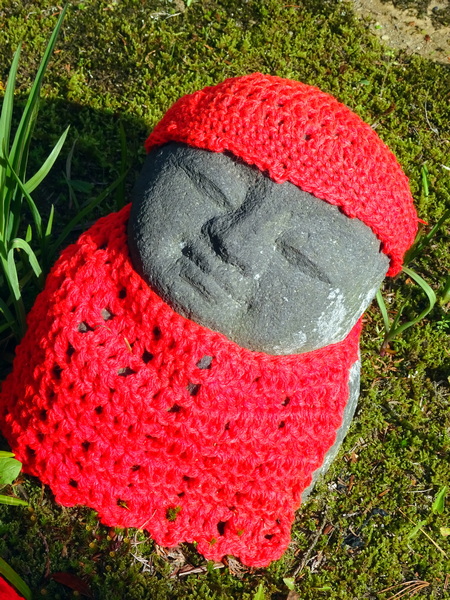 Yes, yes, everyone wants to be outside. If they can’t pick tea, sunbathing and just plain old looking up into the blue sky will do just fine.
Yes, yes, everyone wants to be outside. If they can’t pick tea, sunbathing and just plain old looking up into the blue sky will do just fine.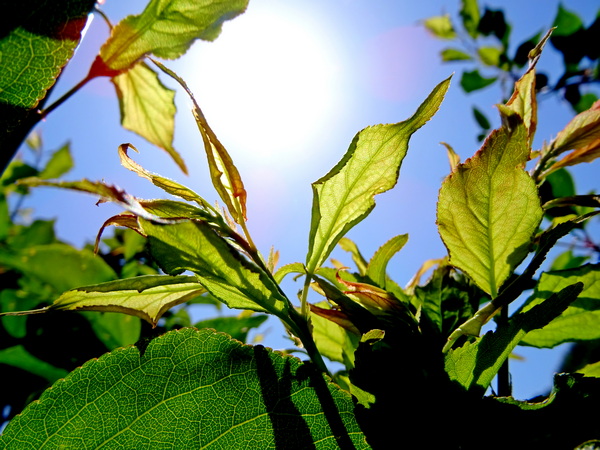 Plum leaves new and newer bathe in the sun.
Plum leaves new and newer bathe in the sun.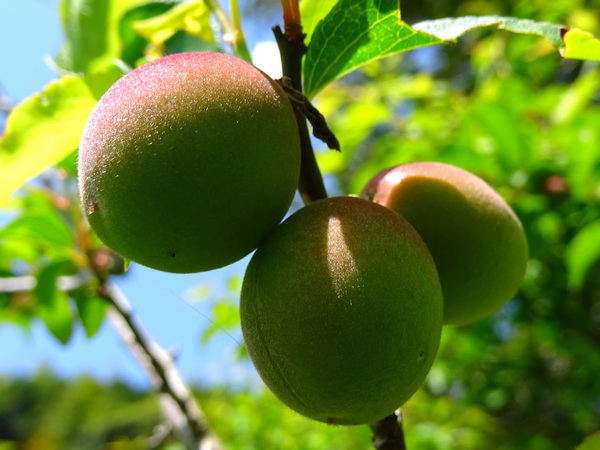
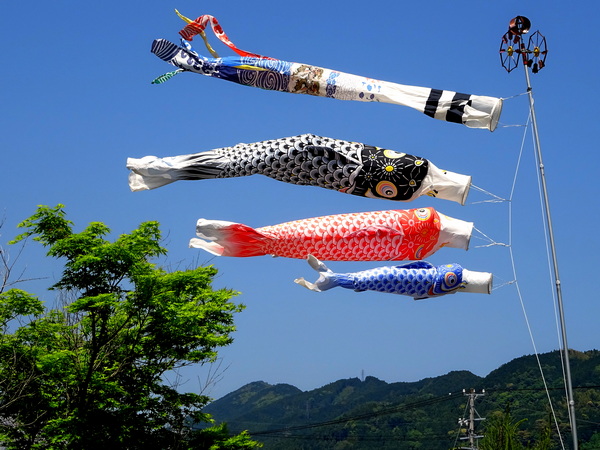
 Sunlight and tea.
Sunlight and tea.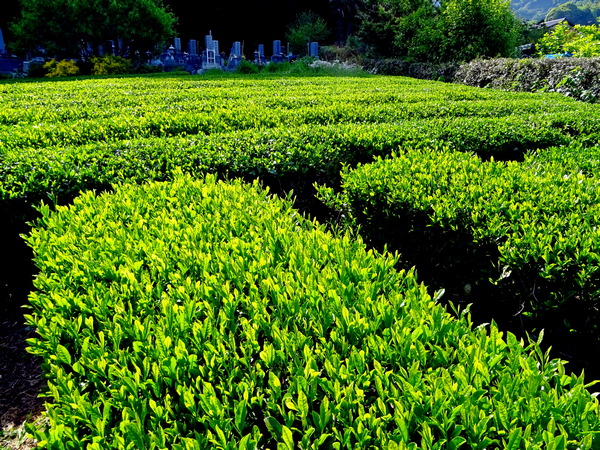
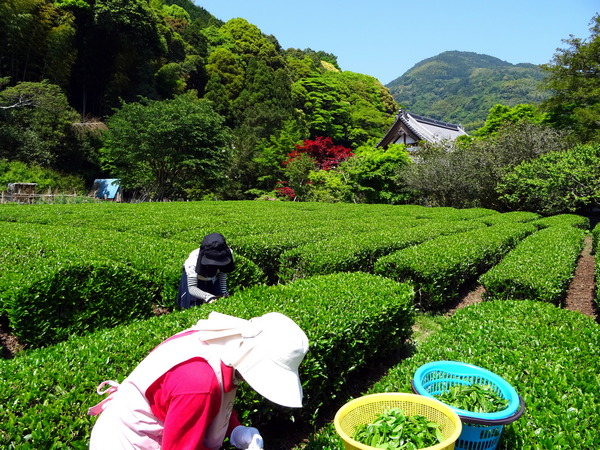 Tsunde, tsunde, tsunde, tsunde, tsunde, tsunde! Tsunde, tsunde, Cha no happa tsunde! (Shizuoka Duo)
Tsunde, tsunde, tsunde, tsunde, tsunde, tsunde! Tsunde, tsunde, Cha no happa tsunde! (Shizuoka Duo)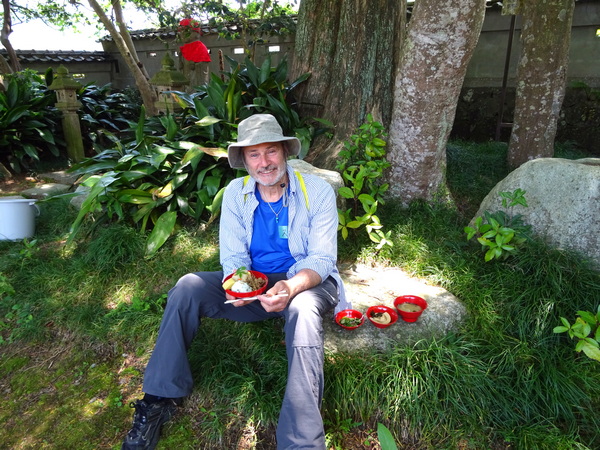
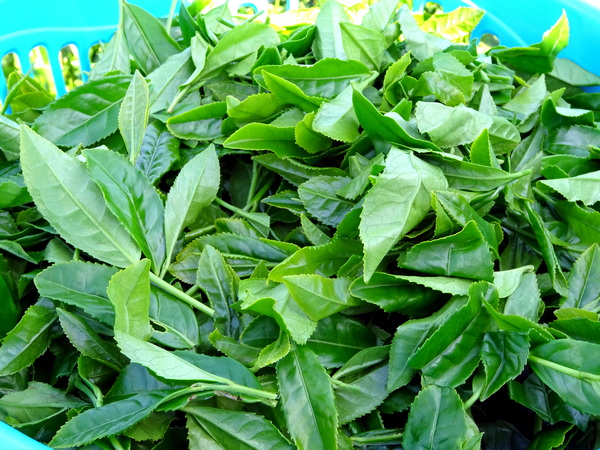

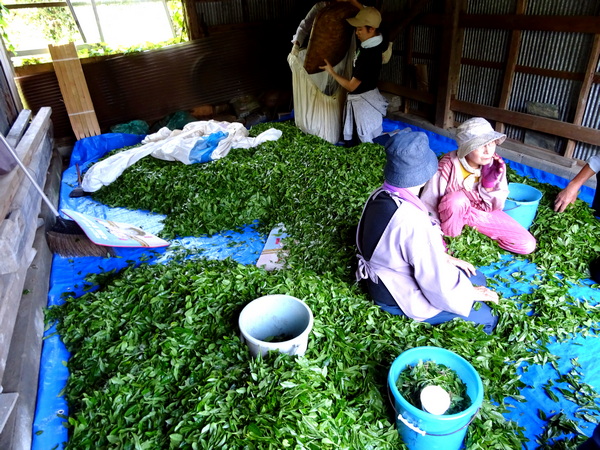 “Whole lotta love. Whole lotta love. Whole lotta leaves.”
“Whole lotta love. Whole lotta love. Whole lotta leaves.”
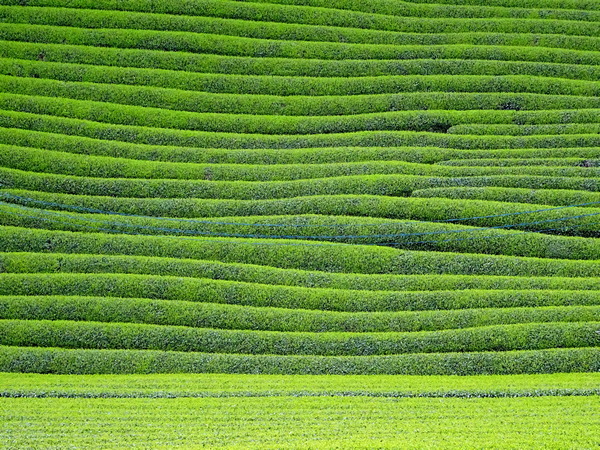 Every day on Ryuso beautiful. Every day the beauty’s different.
Every day on Ryuso beautiful. Every day the beauty’s different.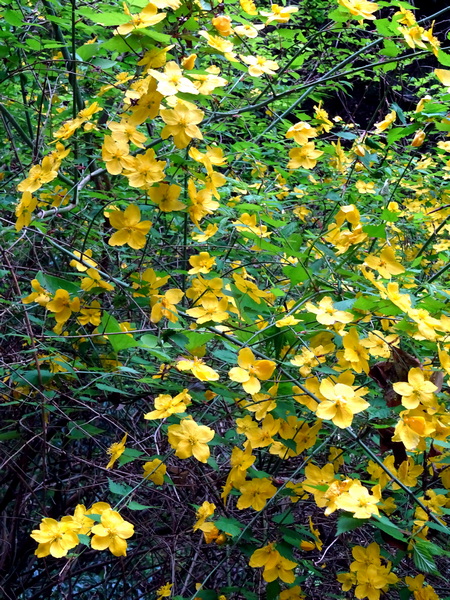
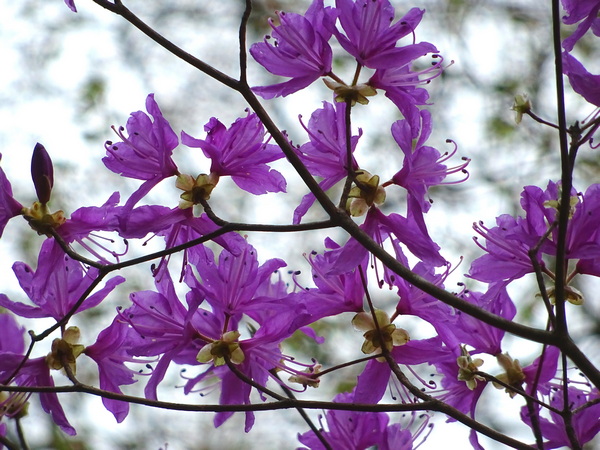
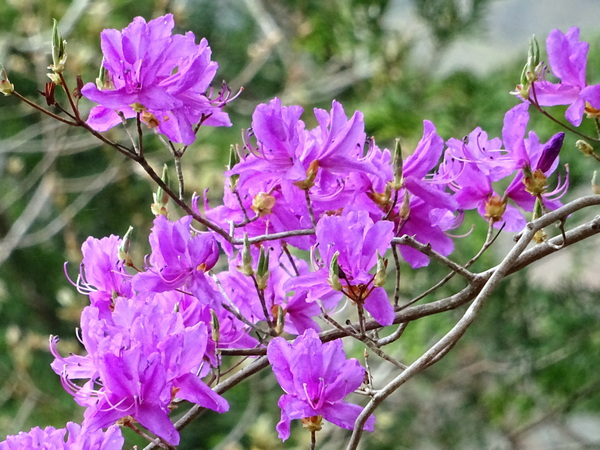
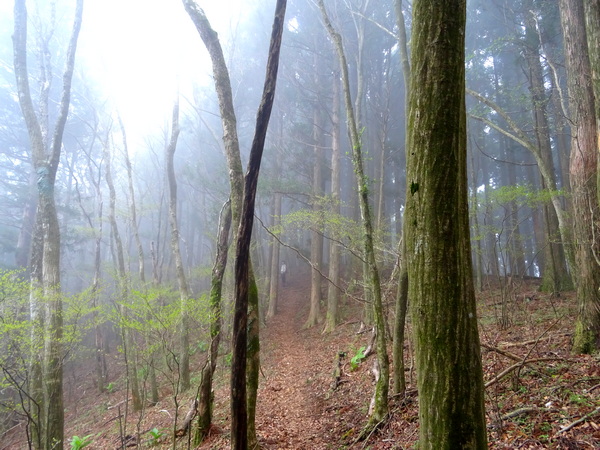 And the grey.
And the grey.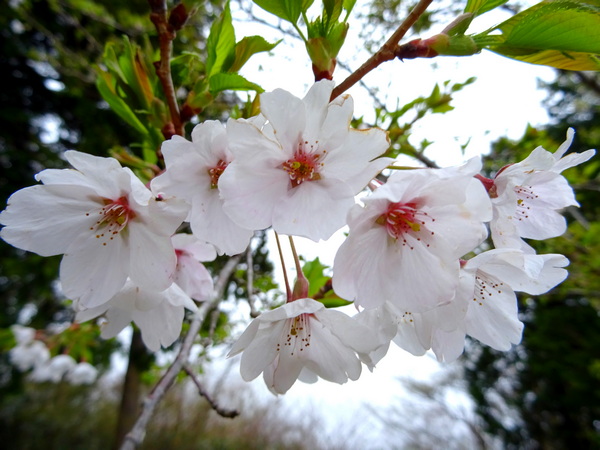
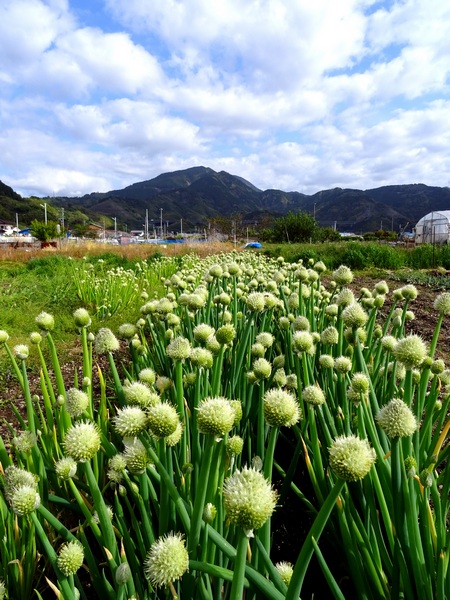
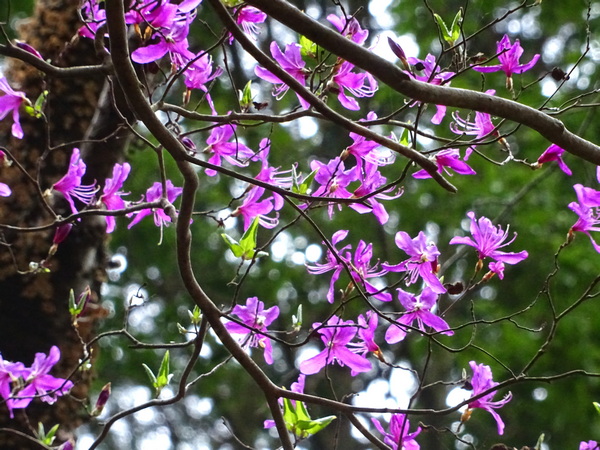
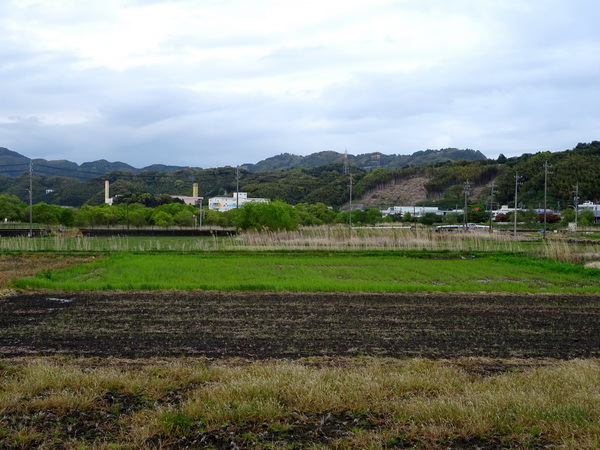
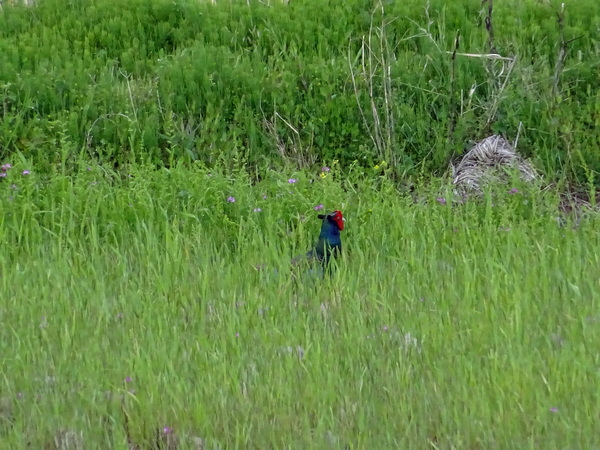
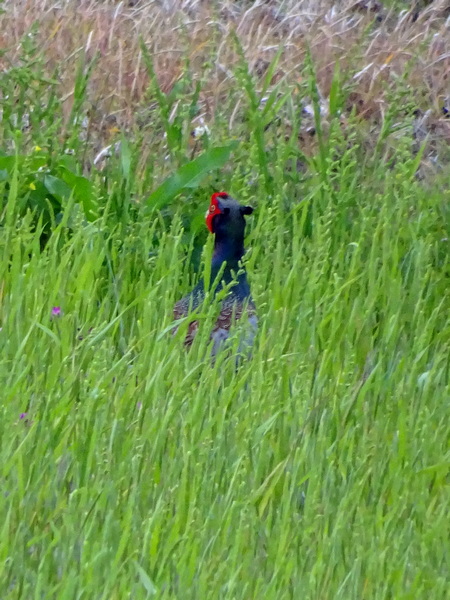



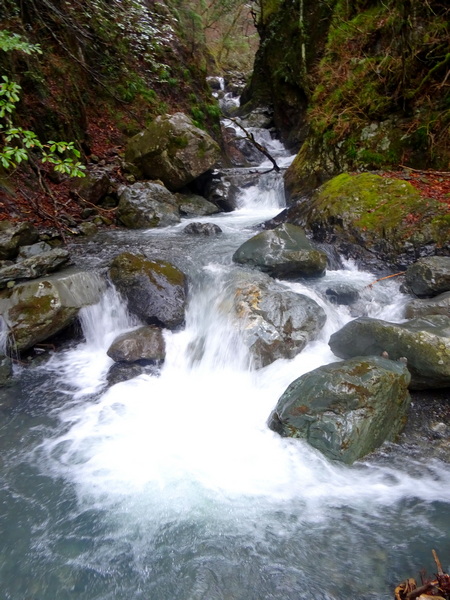
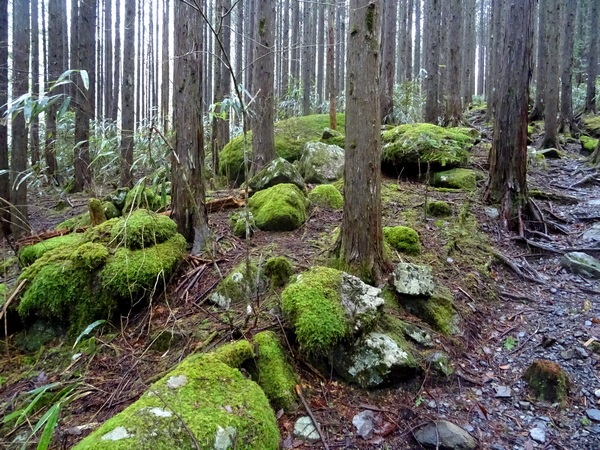

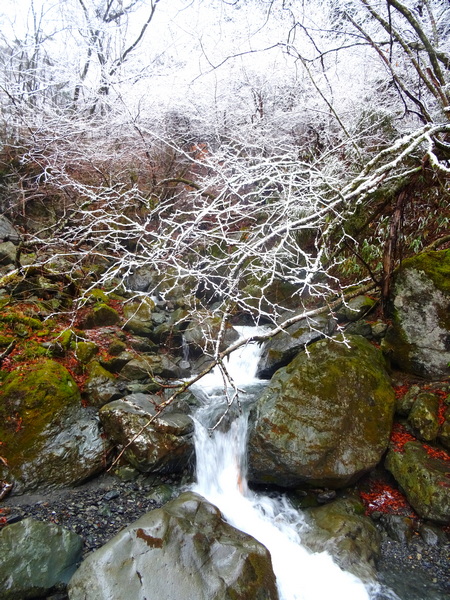
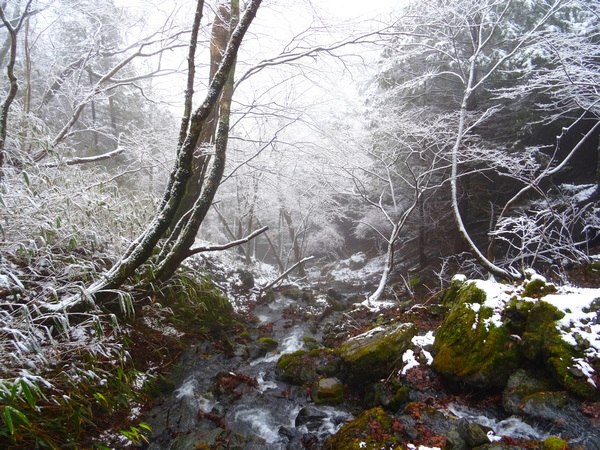
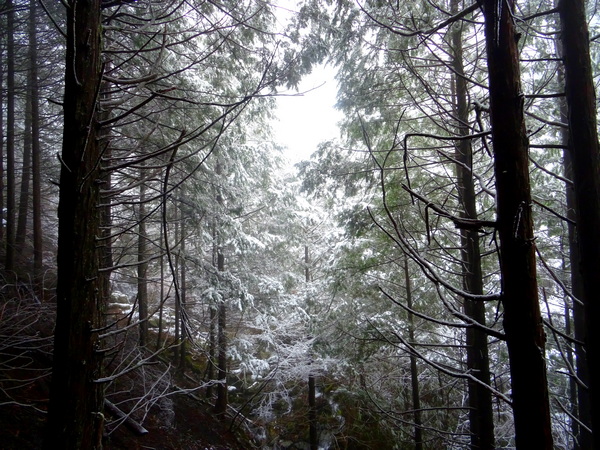
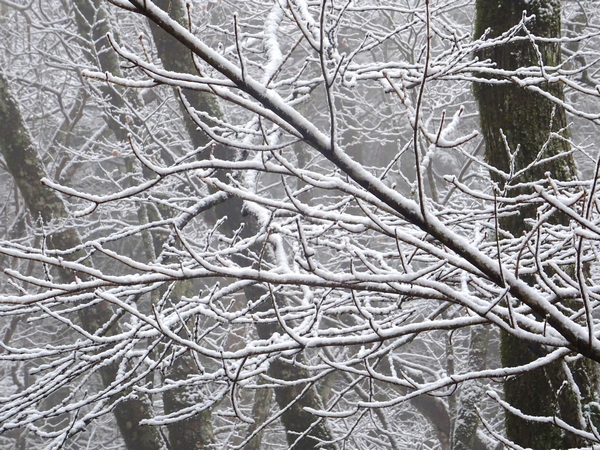 . . . assuming that you actually are in the real world, and not in a Disney movie or an S-F novel . . .
. . . assuming that you actually are in the real world, and not in a Disney movie or an S-F novel . . .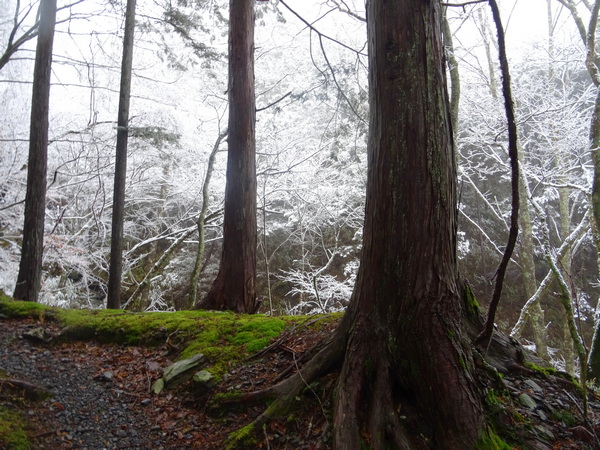
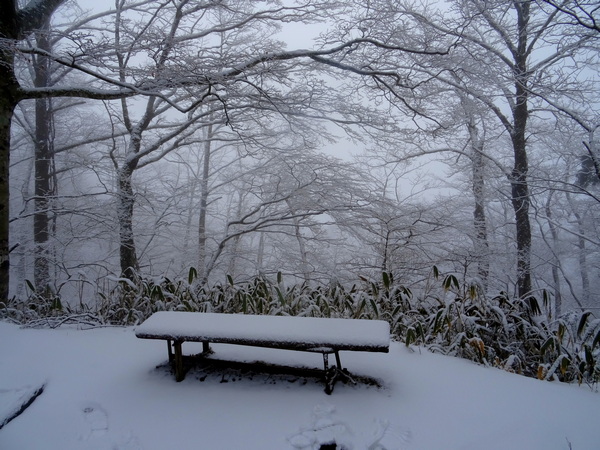
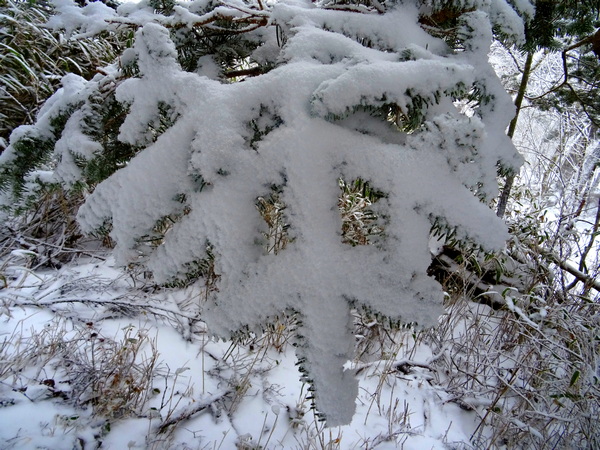
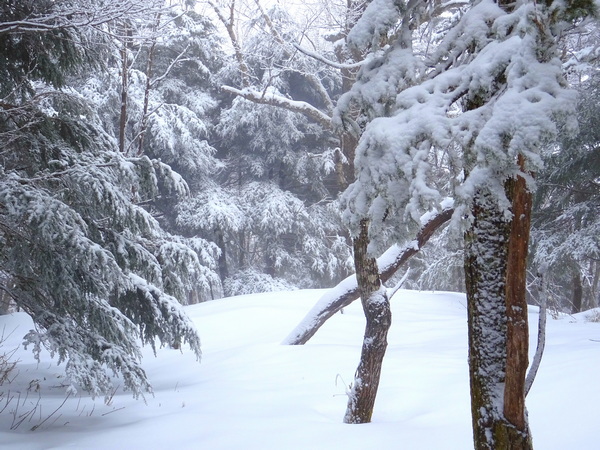
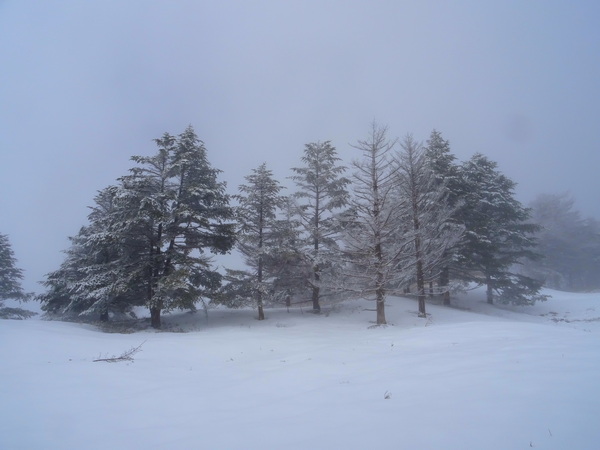
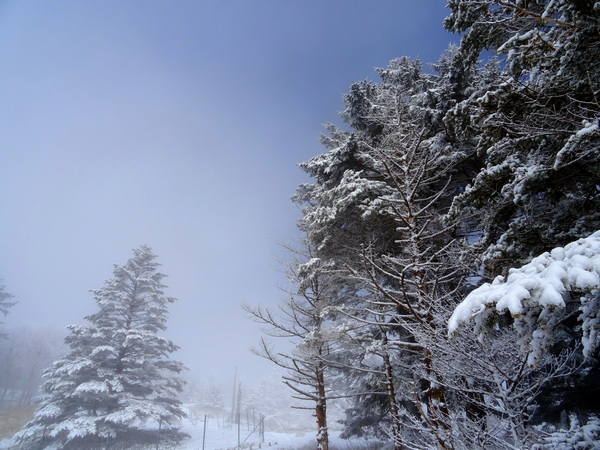
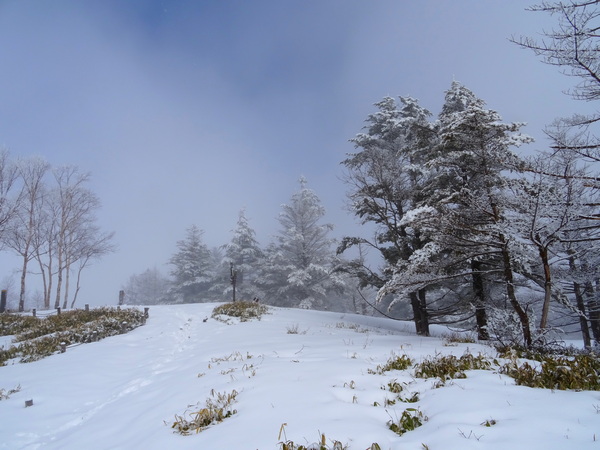
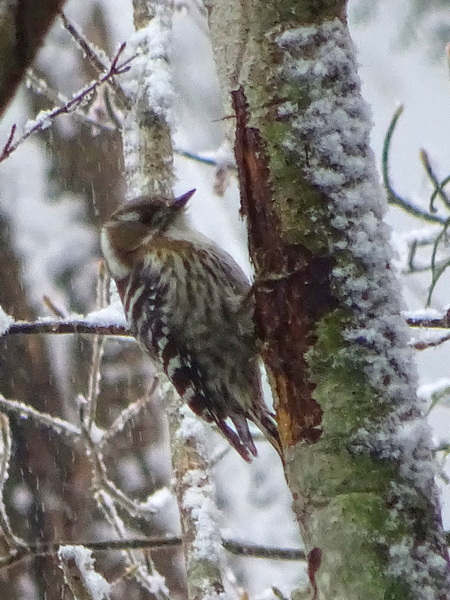
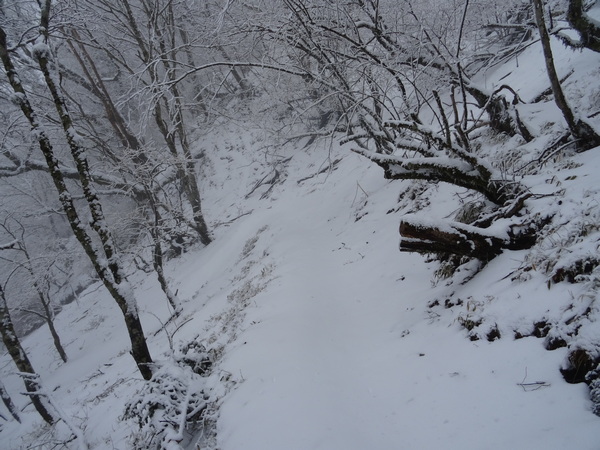 On the way down, I took a route that neither I nor the other hiker had on the way up. So no footprints.
On the way down, I took a route that neither I nor the other hiker had on the way up. So no footprints.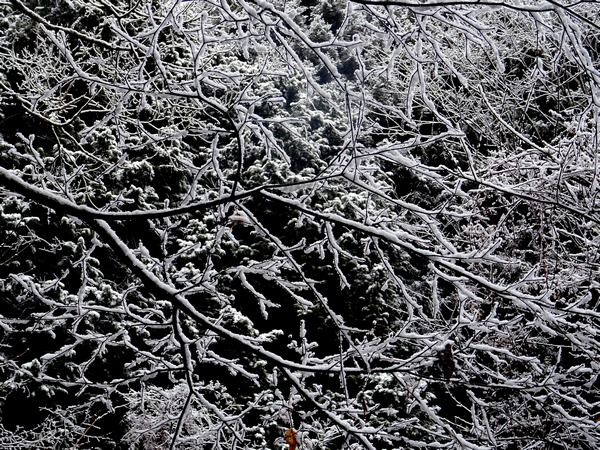
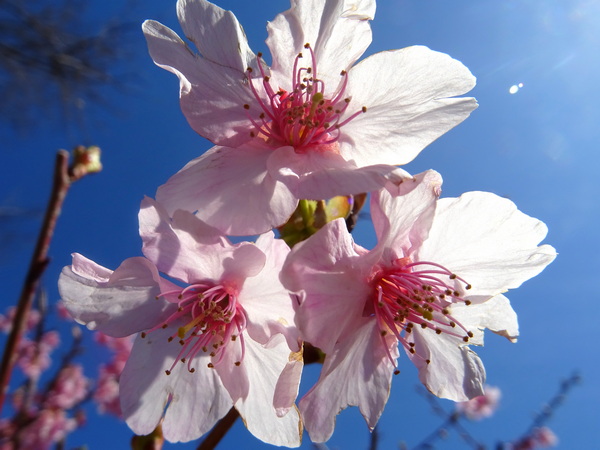
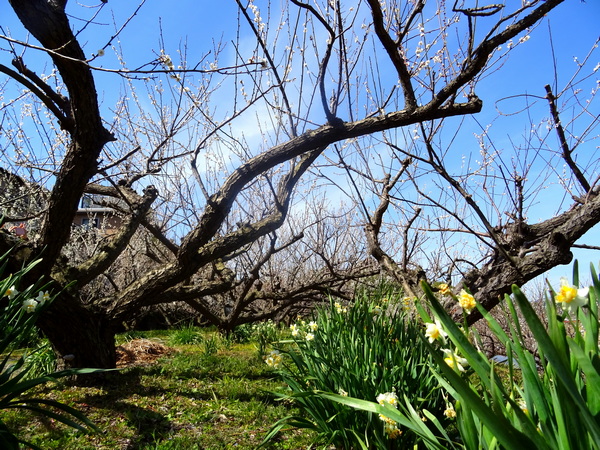
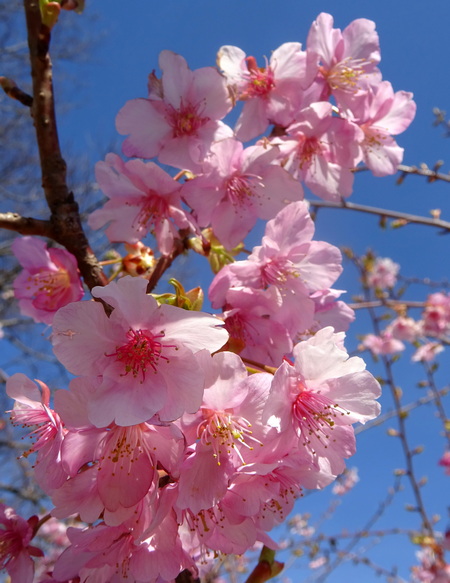
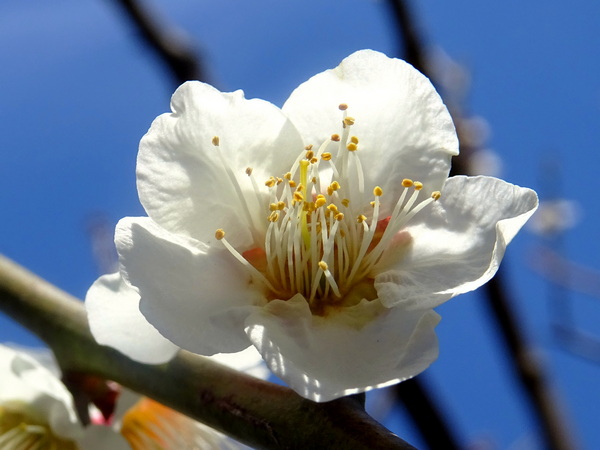
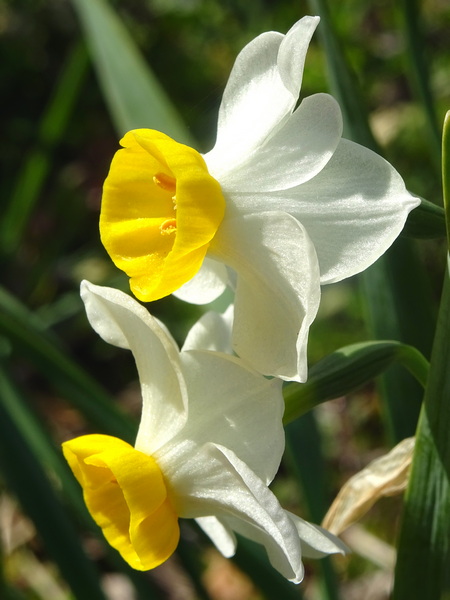
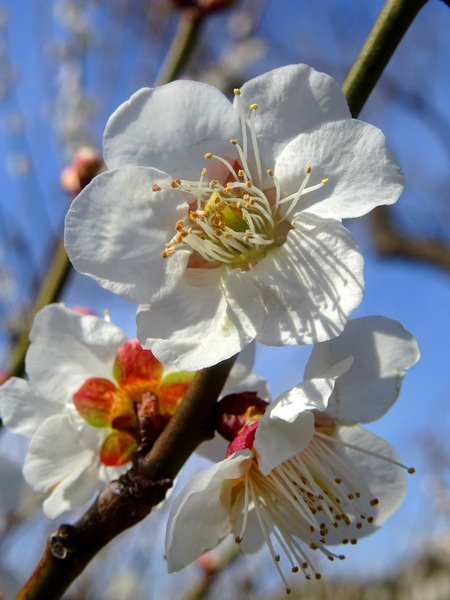
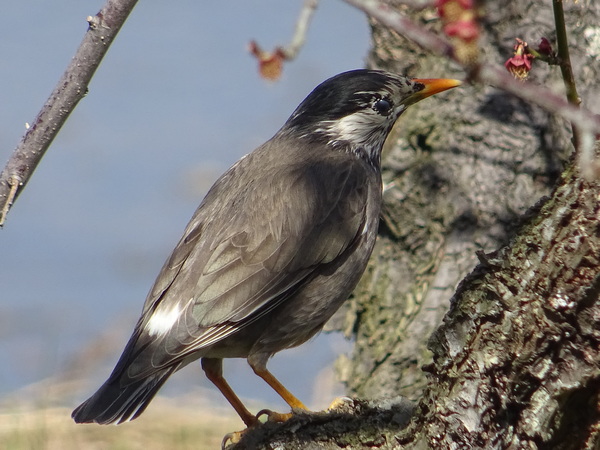
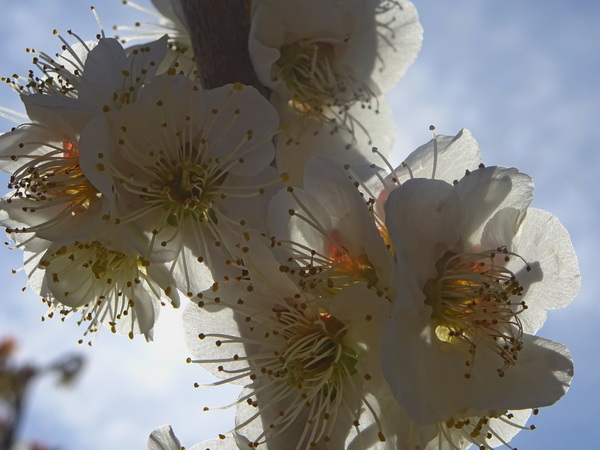
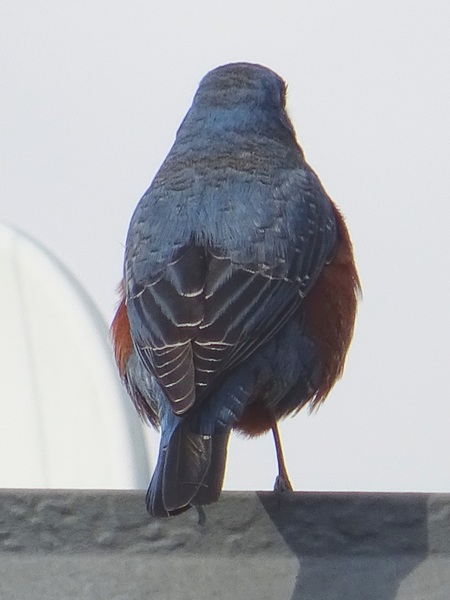
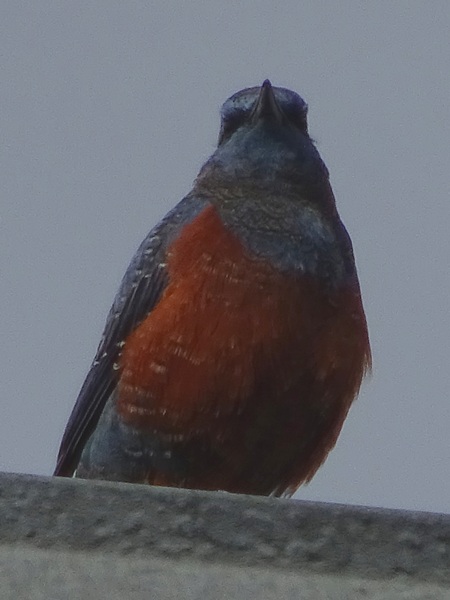 “This is our world. It always has been. Though it’s getting braver by the moment. I’ll be back soon—and what a fine dessert we’ll have to top off our dinner!”
“This is our world. It always has been. Though it’s getting braver by the moment. I’ll be back soon—and what a fine dessert we’ll have to top off our dinner!”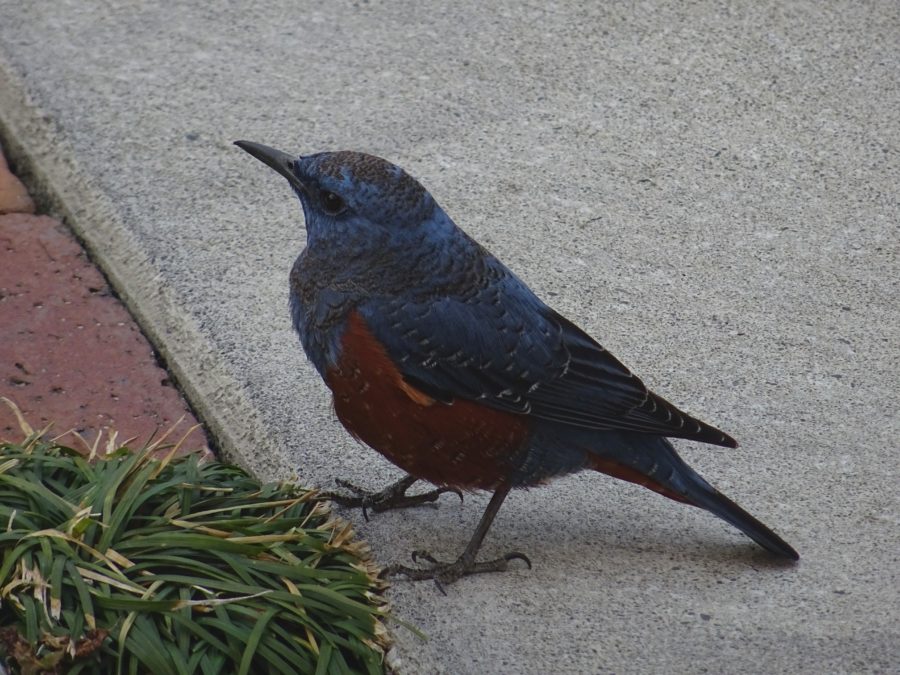 “Yeah, I see you. We had a deal, didn’t we? You asked if you could live amongst us—and we said all right. And you promised to let us be, and when you can, to work with us. So at least here, between the bricks and the concrete, we can enjoy, yes? We’re good?”
“Yeah, I see you. We had a deal, didn’t we? You asked if you could live amongst us—and we said all right. And you promised to let us be, and when you can, to work with us. So at least here, between the bricks and the concrete, we can enjoy, yes? We’re good?”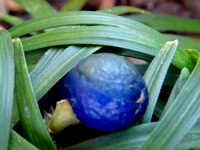
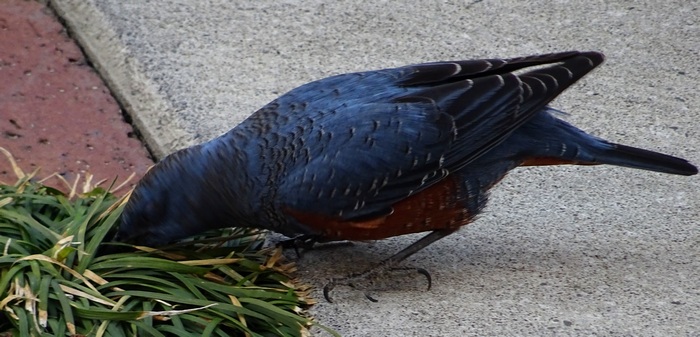
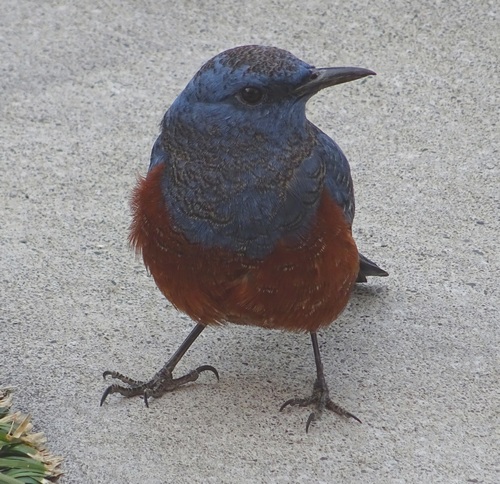 “We do understand each other, don’t we?”
“We do understand each other, don’t we?”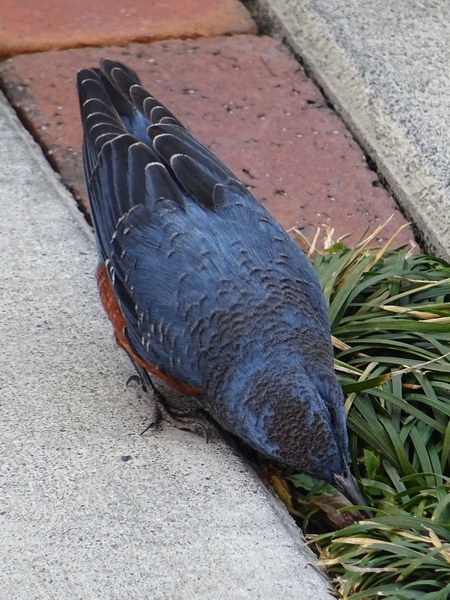 “Ah, just one more. “
“Ah, just one more. “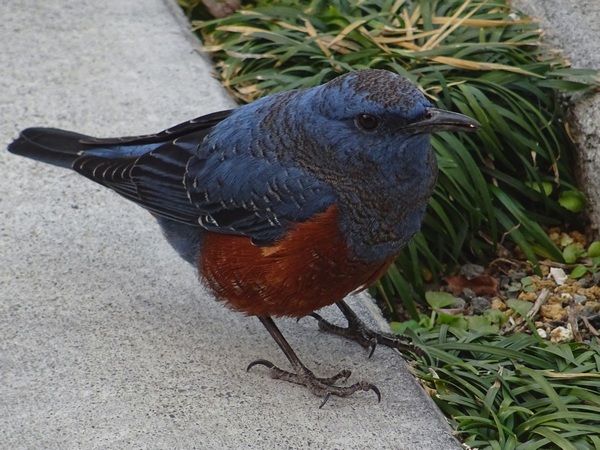
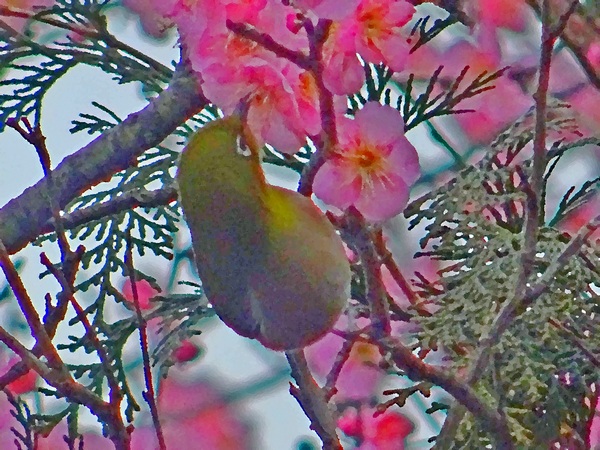
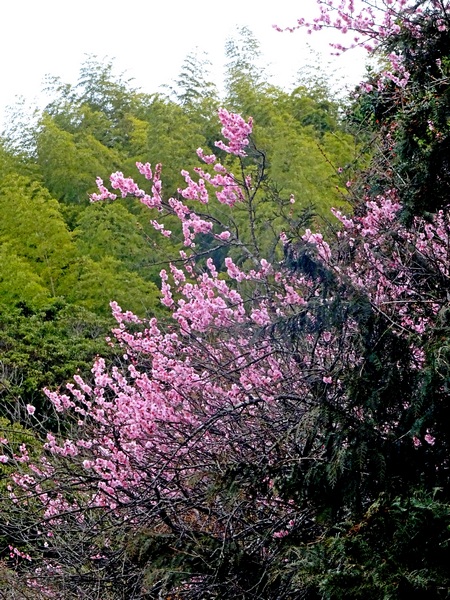
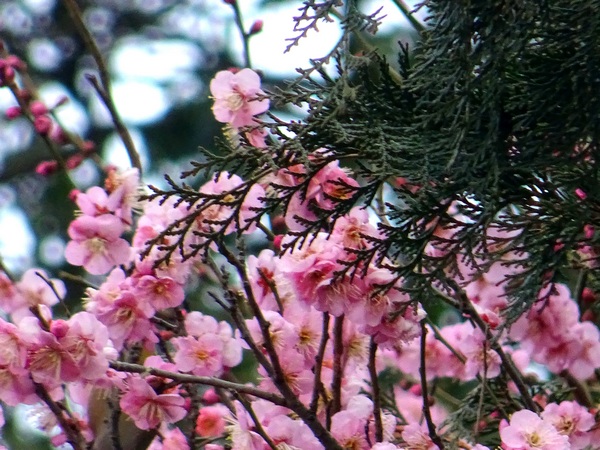
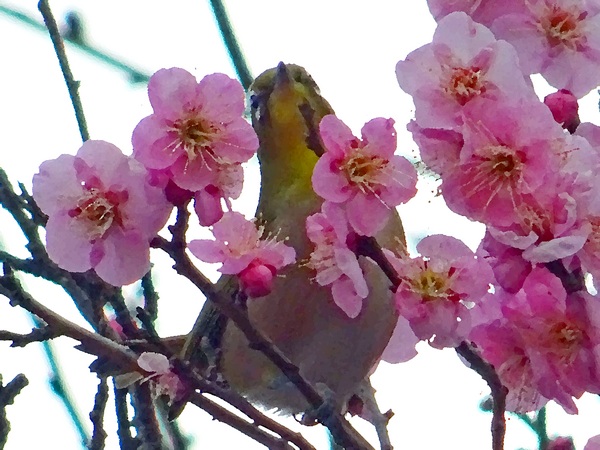
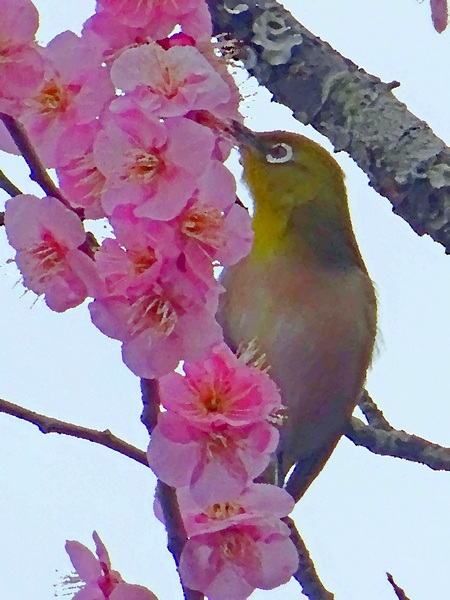 When we get home, we can use our software and remove most of the dark shadows .Then the colors of the mejiro (the white-eyed) will appear. We can make each shot a little less like a photograph, a little more like a painting, hide the blurry, grainy aspects of the original–pretend that we’d never hoped for a crystal clear shot.
When we get home, we can use our software and remove most of the dark shadows .Then the colors of the mejiro (the white-eyed) will appear. We can make each shot a little less like a photograph, a little more like a painting, hide the blurry, grainy aspects of the original–pretend that we’d never hoped for a crystal clear shot.